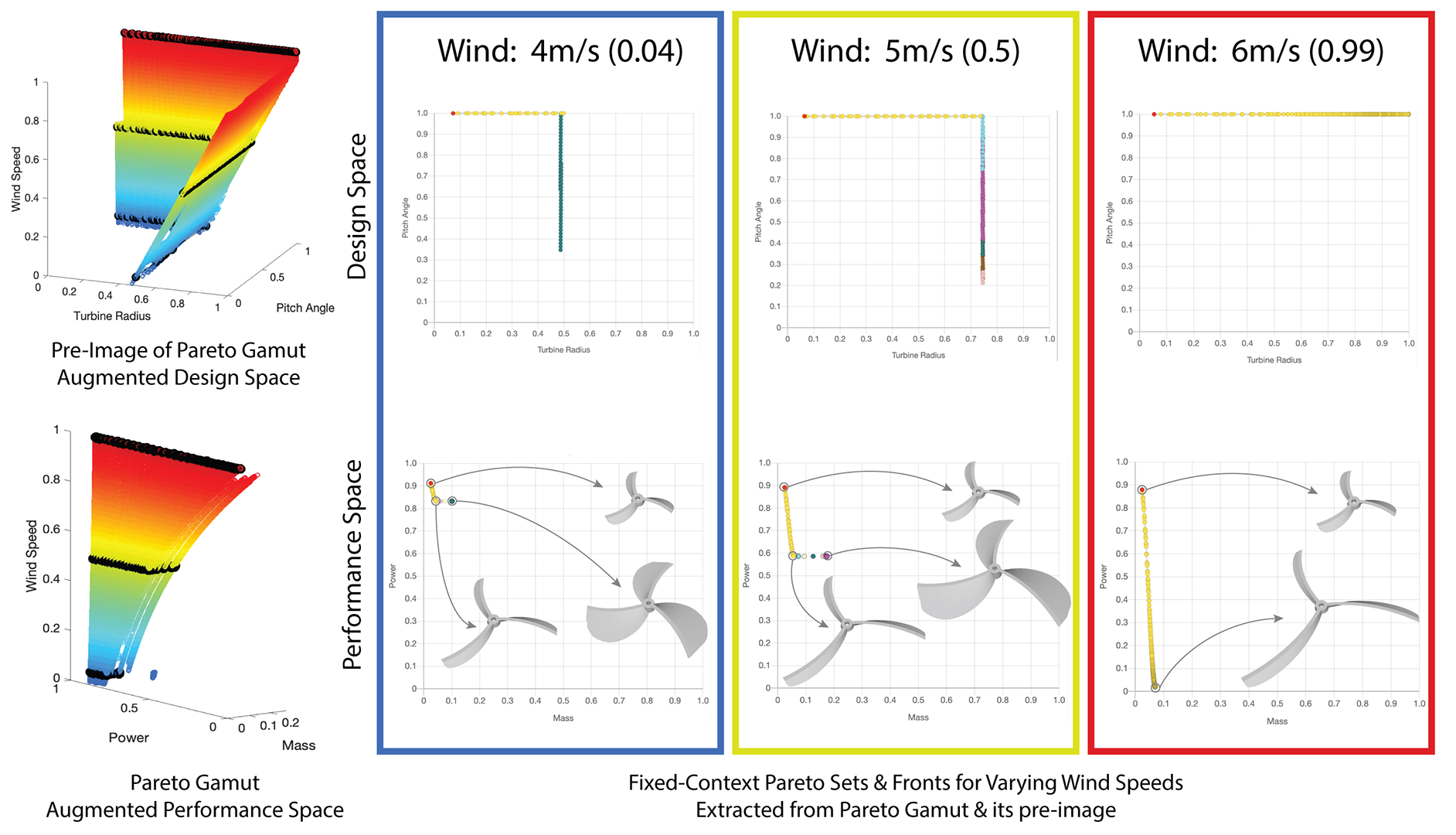Pareto Gamuts : exploring optimal designs across varying contexts
Liane Makatura, Minghao Guo, Adriana Schulz, Justin Solomon, Wojciech Matusik
External link (DOI)
View presentation:2021-10-29T16:00:00ZGMT-0600Change your timezone on the schedule page
2021-10-29T16:00:00Z

Abstract
Manufactured parts are meticulously engineered to perform well with respect to several conflicting metrics, like weight, stress, and cost. The best achievable trade-offs reside on the Pareto front which can be discovered via performance-driven optimization. The objectives that define this Pareto front often incorporate assumptions about the context in which a part will be used, including loading conditions, environmental influences, material properties, or regions that must be preserved to interface with a surrounding assembly. Existing multi-objective optimization tools are only equipped to study one context at a time, so engineers must run independent optimizations for each context of interest. However, engineered parts frequently appear in many contexts: wind turbines must perform well in many wind speeds, and a bracket might be optimized several times with its bolt-holes fixed in different locations on each run. In this paper, we formulate a framework for variable-context multi-objective optimization. We introduce the Pareto gamut, which captures Pareto fronts over a range of contexts. We develop a global/local optimization algorithm to discover the Pareto gamut directly, rather than discovering a single fixed-context "slice" at a time. To validate our method, we adapt existing multi-objective optimization benchmarks to contextual scenarios. We also demonstrate the practical utility of Pareto gamut exploration for several engineering design problems.